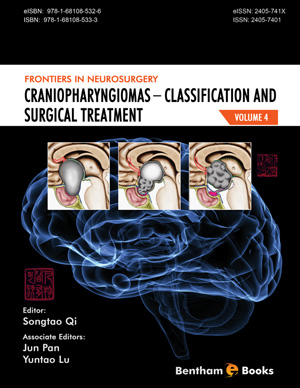Abstract
The growth pattern of craniopharyngiomas (CP) is yet to be understood due to challenges arising from the diversity of morphological features that exist. This in turn has had implications on the development of safe surgical strategies for management of these lesions. In this chapter, we proposed a morphological classification of CP based on their tumor–membrane relationship, which will contribute to better understanding of CP morphology and prediction of the intraoperative classification. Moreover, based on our studies, the arachnoidal sleeve around the pituitary stalk (ASPS) was noted, and divided the pituitary stalk into four segments. Correspondingly, the growth of CPs was divided into four basic patterns—infradiaphragmatic (ID), extra-arachnoidal (EA), intra-arachnoidal (IA) and sub-arachnoidal (SA) growth. After analysis of 195 clinical cases of CP, we finally proposed the clinical classification “QST” classification, which detailed the relationship of the surrounding structures to CPs and purports to predict and identify the intraoperative anatomical stratification. It also attempts to help predict the growth patterns of these tumors. Finally, the surgical principle of approach selection for CP was discussed and proposed.
Keywords: ASPS, Classification, Craniopharyngioma, Membrane, Pituiray stalk.






















